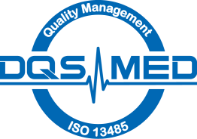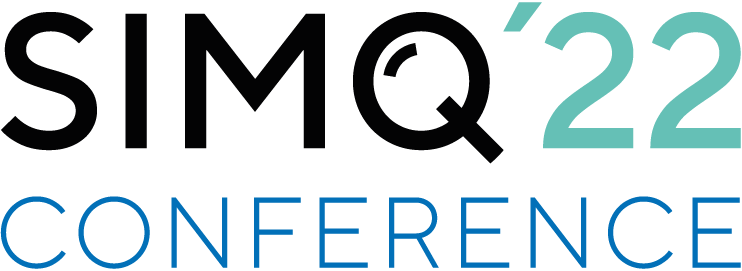Simulation supports decision-making process
Better diagnoses of obstructive sleep apnea
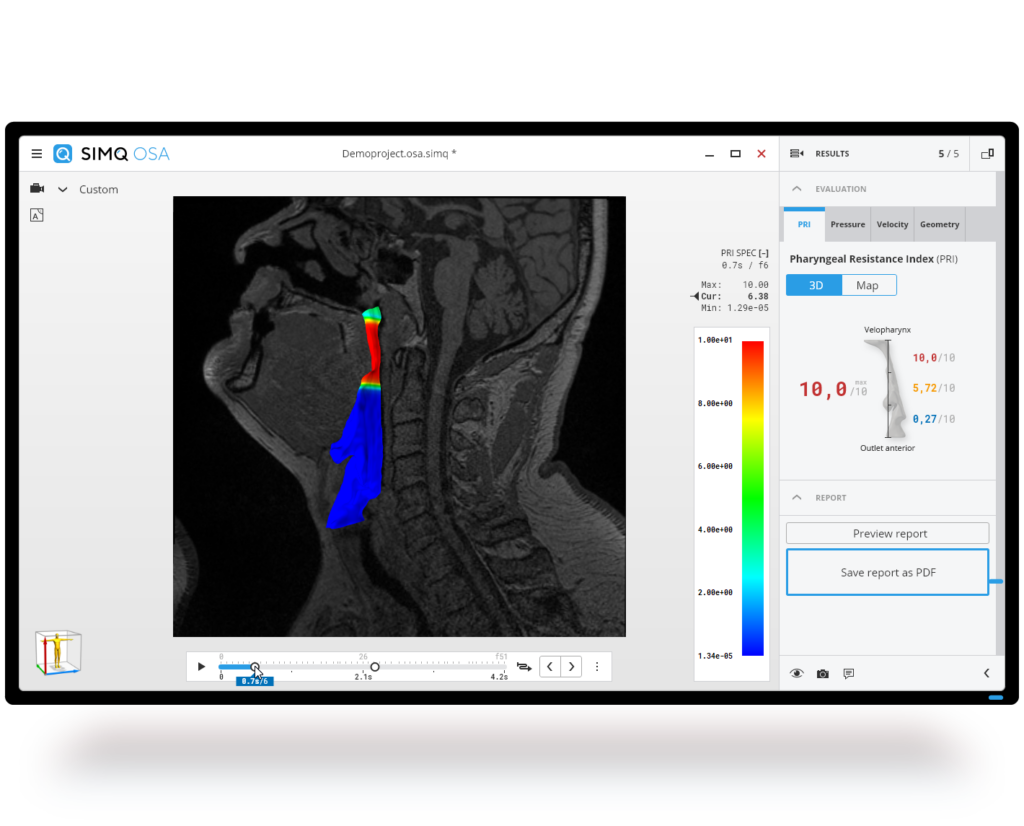
Simq OSA
Obstructive sleep apnea (OSA/OSAS) is a life-threatening and life-shortening disorder that affects more than 900 million adults worldwide.
In collaboration with clinical partners, Simq has developed a medical device that can support the further diagnosis of severe snoring and OSA and thus help to find the right therapy more quickly – Simq OSA.
The Simq OSA software provides assistance in the diagnosis by visualizing sleep-related breathing disorders. Simq OSA creates a numerical model of the anatomical situation of the patient’s upper airway. For this purpose, Simq OSA performs a simulation of the airflow using numerical calculation methods. From this, Simq OSA provides an evaluation and visualization of fluid mechanical parameters and derived characteristic values for the representation of anatomical and physiological factors to support the specialist staff.
Adults affected
worldwide
Need more than
one treatment
How it works
How it works
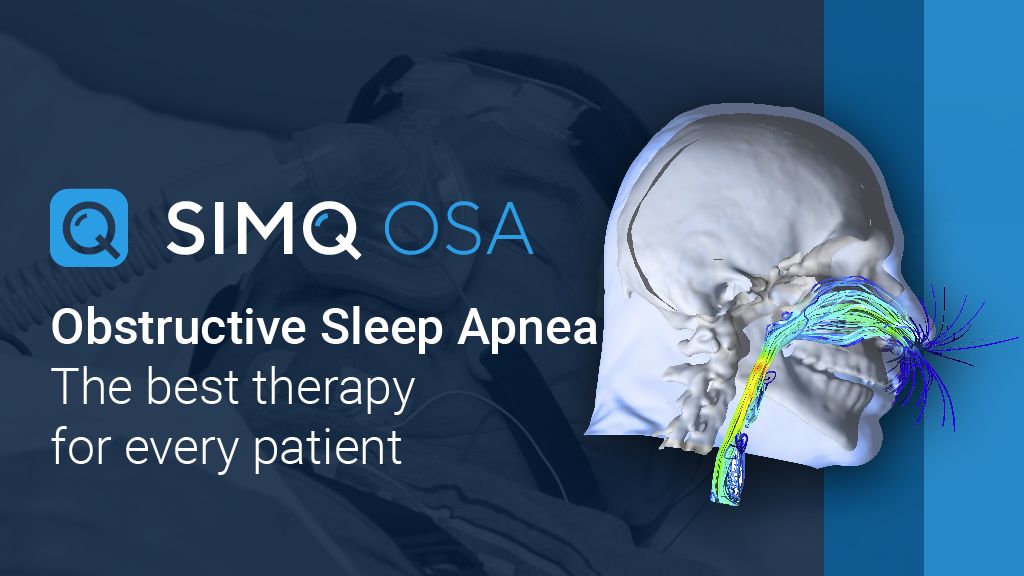
Simq OSA at a glance
Target: Patient-specific Identification of anatomical causes for severe snoring and OSAS
- Objectify the diagnosis through numerical simulation of pharyngeal airflow
- Identify and localize anatomical reasons for the sleep-related breathing disorder
- Visualization of the patients' situation with physical simulation
- Evaluation and support of different treatment options
- CE mark received Q2/2024
- Further areas of application such as MAD and orthognathic surgery are being investigated
Use case – Diagnosis for sleep apnea
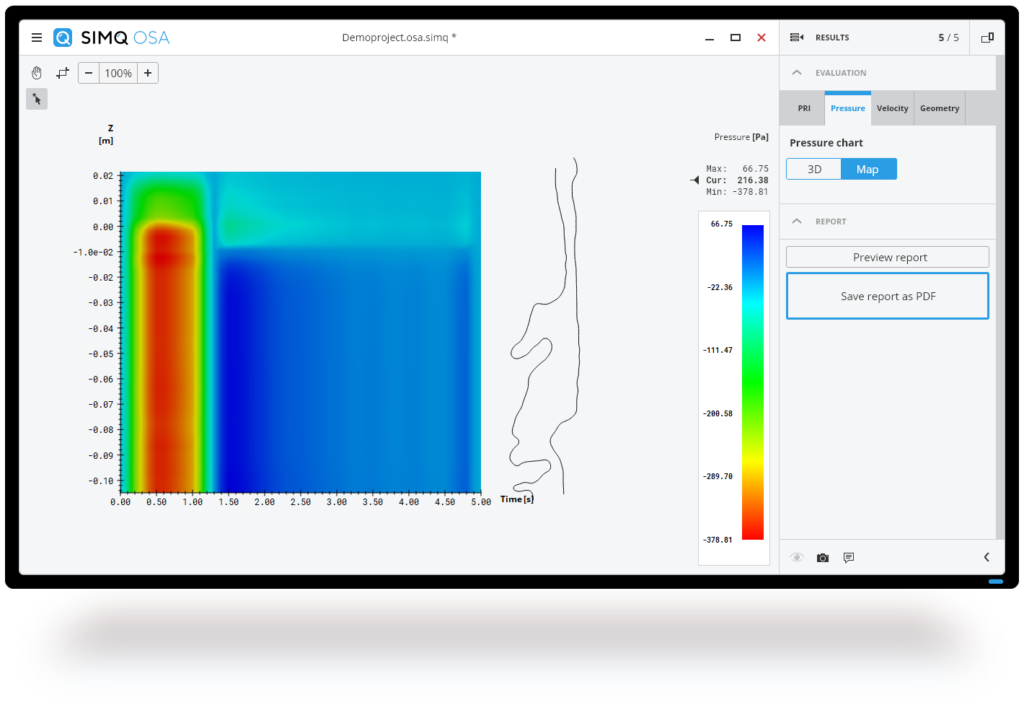
Get more details
The spectrum of sleep-related breathing disorders ranges from disturbing habitual snoring (rhonchopathy) to central sleep apnea to obstructive sleep apnea (OSA) to obstructive sleep apnea syndrome (OSAS). While snoring occurs commonly in the general population, habitual or heavy snoring is not normal and is the primary symptom of OSA. The obstructive sleep apnea is characterized by repetitive breathing pauses during sleep. These pauses (apneas) are caused by a collapse of the pharynx at inspiration when the air pressure in the upper airway drops below the ambient pressure. The apnea can last from a few seconds to several minutes until the patient eventually awakens to resume breathing. In general, obstructive sleep apnea is a chronic condition that does not go away on its own. Central sleep apnea occurs because your brain doesn’t send proper signals to the muscles that control your breathing and is less common than obstructive sleep apnea. Some studies showed a correlation of central sleep apnea and anxiety. The obstructive sleep apnea syndrome (OSAS) is associated with additional daytime symptoms such as chronic fatigue and excessive daytime sleepiness (EDS).
The sleep-related breathing disorders disrupt sleep and thus impair its restorative function. Yet even more important, the breathing pauses during sleep result in low blood oxygen levels that can eventually lead to damage of vital organs. Further symptoms of OSA and associated medical disorders include disruptive snoring, hypertension, coronary artery disease, congestive heart failure, stroke, and diabetes. The unrestful sleep in general provokes fatigue, mood disorders, loss of productivity, and traffic accidents.
The prevalence of OSA in the population is constantly increasing. Untreated OSAS can lead to serious medical consequences for a patient and as a common disorder poses a growing public health problem. Severe sleep apnea with apnea-hypopnea index greater than 30 can lead to a life-span reduction of up to 18 years.
In adults, the most common cause of OSA is excess weight and obesity, which is associated with the soft tissue of the mouth and throat. During sleep, when throat and tongue muscles are more relaxed, this soft tissue can cause the airway to become blocked.
Despite extensive research, the complex pathogenesis of obstructive sleep apnea is still not completely understood. However, functional and anatomical abnormalities of the upper airway and craniofacial structure are believed to play an important role in development of OSA. Basically, the breathing pauses during sleep are caused by upper airway narrowing and sleep-induced loss of muscle tone. Examples of anatomical factors which can produce upper airway narrowing are mandibular deficiency, elongated soft palate, and enlarged adenoids or tonsils. Functional factors are associated with impairment of neuromuscular and ventilatory control mechanisms. Among the risk factors that promote obstructive sleep apnea are obesity, alcohol or drug abuse, old age, gender, and ethnicity. Given the many possible causes of OSA, even lean and fit people can suffer from OSA.
The current gold standard for diagnosis is polysomnography (PSG). The PSG examination provides measurements of apnea-hypopnea index (AHI), which is a key indicator for diagnosing obstructive sleep apnea. The AHI represents the average number of apnea events (complete cessation of breathing) and hypopnea events (partial cessation of breathing) per hour of sleep. Based on AHI, the severity of OSA can be classified into
- mild (AHI of 5…15),
- moderate (15…30) and
- severe (AHI over 30).
The polysomnography data, however, does not contain information on the nature of the airway obstruction or its exact location. Drug-induced sleep endoscopy (DISE) is a diagnostic technique for examining upper airway morphology under simulated sleep conditions. DISE is performed by an ENT (Ear-Nose-Throat) specialist assisted by an anesthesiologist. After sedating the patient, a fiberoptic laryngoscope is introduced into the nose for visualization of dynamic changes in pharynx during breathing. The procedure allows for identifying the site and pattern of airway collapse; however, it still lacks a standardized scoring system. While PSG and DISE are time-consuming and costly medical examinations with limited availability, several self-administered questionnaires have been developed for the assessment of OSA risk.
The common approaches for the treatment of obstructive sleep apnea include positional therapy (discouraging supine sleep), oral appliances, positive airway pressure devices, various maxillofacial surgical procedures, and neuromuscular stimulation therapy. Sleep apnea treatments like behavioral changes such as weight reduction, smoking cessation, avoidance of alcohol and sedative medications can also prevent or relieve OSA symptoms. For a mild form of OSA, such lifestyle changes and optimization of sleep hygiene can lead to significant improvements. There are also ongoing studies aimed at identifying effective drug treatments for obstructive sleep apnea.
As OSA can have various causes. It is not possible to make a general statement as to whether positional therapy such as sleeping with head elevated, sleeping on your side or on your stomach can help to prevent sleep apnea. However, to reduce obstructive sleep apnea, it can help to sleep sideways.
Back sleepers have been shown to snore more often and suffer from respiratory problems more frequently. When sleeping in the supine position, there is a particularly high risk that the relaxed tongue muscle will slip backward and collapse the airway. That’s why it can be helpful for back sleepers to change their habits. The problem with this is that when you sleep, you will automatically turn from your side to your back again if you are so used to it. Elevated bedding for the head or performing a so-called “supine avoidance” with the help of tennis balls or a backpack can facilitate the change of position.
Positive airway pressure (PAP) devices (often referred to as sleep apnea machines by non-professionals), provide non-invasive ventilation of OSA patients, causing the airway to remain open during sleep. The main components of a PAP device are a mechanical pump and a nasal and/or oral mask that must be worn by a patient throughout the night.
The required air pressure level is determined by a sleep specialist by adjusting the pump operating characteristics and monitoring the breathing pattern of a patient. The PAP therapy can be delivered as continuous PAP (cPAP), bi-level PAP (bPAP), or auto-titrating PAP (aPAP). The aPAP is the most advanced type of PAP therapy which can automatically detect and adapt to changes in the patient’s breathing during sleep.
While the PAP therapy is currently the method of choice in the treatment of moderate and severe OSA, the compliance with PAP treatment is often low because of the discomfort from wearing a mask, side effects at the face and in the oral cavity, flow leakage, and noise.
The use of oral appliances (OA, mandibular advancement devices – MAD, mandibular advancement splints – MAS) is a promising alternative to the PAP therapy for mild and moderate obstructive sleep apnea. With the non-invasive MAD therapy, the patient wears an oral appliance during the sleep to reduce the risk of the upper airway collapse by keeping the mandible in a protruded position. The MAD treatment for obstructive sleep apnea has a limited success rate due to a complicated effect of the lower jaw repositioning on the upper airway geometry and temporomandibular joint. Determination of the correct level of protrusion, that would maximize the therapeutic efficiency and minimize the side effects, requires doctors to have a good understanding of occlusion and temporo-mandibular disorder (TMD).
The invasive OSA treatment strategies based on surgical intervention are aimed at preventing upper airway collapse during sleep by the manipulation of the patient’s craniofacial structure. There are various more and less invasive correcting measures to increase the bulk volume of the upper airway by either removing or repositioning tissue. The irreversible changes made during surgery result in 100% adherence. However, the fact of not knowing the cause and exact position of the obstruction has an adverse impact on the effectiveness of this type of therapy. The hypoglossal nerve stimulation is an emerging therapy approach directed to overcome functional causes of obstructive sleep apnea. The therapy involves implantation of a generator and an electrode into the patient’s body. The implants provide an activation mechanism for certain tongue muscles that can be used during sleep without the patient’s arousal. The generator automatically produces an electrical impulse based on the real-time analysis of the breathing pattern. Consequently, the stimulated muscles maintain airway patency.
The principle of personalized medicine comes into play in the treatment of OSA patients. One of the difficulties in treating OSA is the fact that the location of the airway collapse varies from patient to patient and cannot be predicted without a more in-depth analysis of the airway geometry. Therefore, medical simulation of the upper airway is gaining significant interest in diagnosing and treating OSA. Simq is developing a medical software called Simq OSA, a physics-based modeling methodology that could result in shorter treatment times and better initial care.
Partners



Articles & publications
- Research Article
Application of patient-specific simulation workflow for obstructive sleep apnea diagnosis and treatment with a mandibular advancement device
International Journal for Numerical Methods in Biomedical Engineering
- Research Article
Experimental study on the influence of model variations on the airway occlusion of an obstructive sleep apnea patient
Journal of Biomechanics
More information
